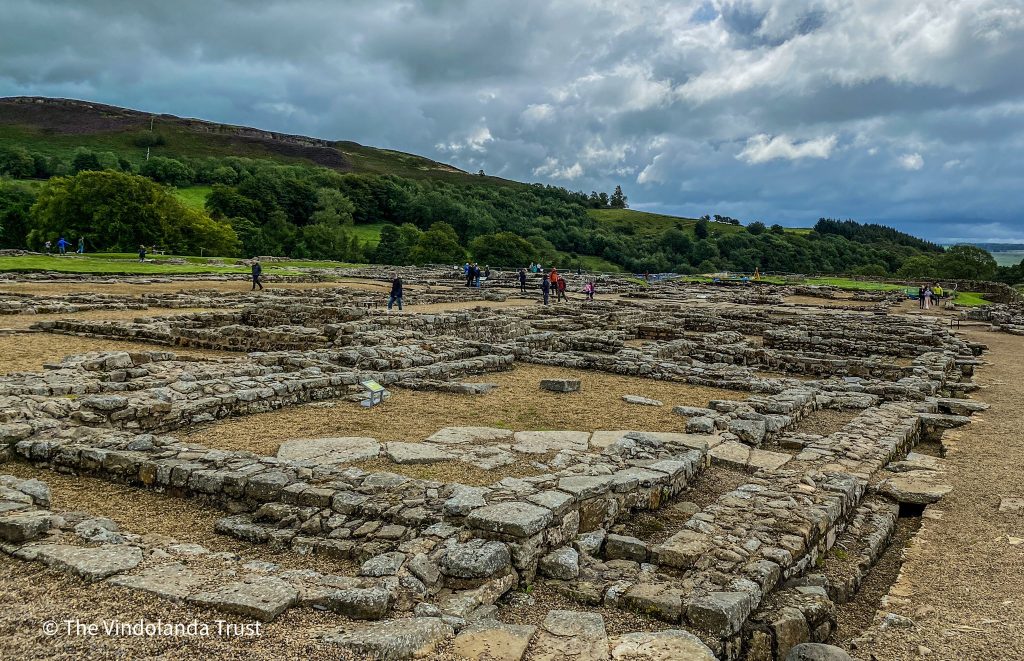Art World
A Volunteer Archaeologist Just Discovered the Oldest Example of Religious Graffiti Ever Found in Britain
The graffiti, found in an ancient Roman fort, is 1,400 years old.

The graffiti, found in an ancient Roman fort, is 1,400 years old.

Taylor Dafoe

Researchers in northern England have uncovered the shards of a 1,400-year-old chalice etched with angels, crosses, and other symbols of Christian iconography, making it the oldest example of religious graffiti found in the country, they say.
The artifact was uncovered at Vindolanda, an ancient Roman fort located south of Hadrian’s Wall in what is today called Northumberland. The same dig yielded the discovery of foundations for a Christian church that has been dated back to the 6th century.
“It is genuinely exciting,” David Petts, a post-Roman specialist at Durham University and project researcher, told the Guardian. “When we think of graffiti, we tend to think it’s unauthorized vandalism. But we know from many medieval churches that people would put marks and symbols on buildings. What is unique about this is finding them on a vessel.”
The 14 pieces of the chalice, which was once the size of a modern-day cereal bowl, were discovered by a volunteer who signed on to help with the Vindolanda excavations last year.

A shard from the ancient chalice. Courtesy of the Vindolanda Trust.
Though the chalice was found in poor condition, researchers used advanced photographic techniques to reveal dozens of symbols etched on both the interior and exterior of the vessel. Among those identified were letters in Latin, Greek, and an ancient medieval script, as well as images of a fish, a whale, members of a church congregation, and a “chi-rho,” the monogram representing Jesus Christ.
“This is a really exciting find from a poorly understood period in the history of Britain,” Petts added in a statement. “Its apparent connections with the early Christian church are incredibly important, and this curious vessel is unique in a British context.”
“It is clear that further work on this discovery will tell us much about the development of early Christianity in the beginning of the medieval period,” he said.
The artifact is now on view in a special exhibition at Vindolanda’s museum that looks at the last periods of occupation at the historic fort.
A sneak peek inside our new gallery which opens at Vindolanda on Monday. #Vindolanda https://t.co/GNCdNb8x3Q pic.twitter.com/prc8i6Vagj
— Vindolanda Trust (@VindolandaTrust) August 29, 2020
Vindolanda was erected as a garrison for Roman troops and supplies just prior to the building of Hadrian’s 73-mile wall in 122 AD, at the northern border of the Roman empire. The site of numerous excavations, archeologists have unearthed numerous relics at the fort, including cavalry swords, a board game, and—most famously—the Vindolanda tablets, which at the time of their discovery were the oldest surviving handwritten documents in Britain.
The newly uncovered chalice immediately ranks among the most important discoveries at the site, Andrew Birley, Vindolanda’s CEO and director of excavations, said in the statement.
The discovery of the chalice, he said, “helps us appreciate how the site of Vindolanda and its community survived beyond the fall of Rome and yet remained connected to a spiritual successor in the form of Christianity.”